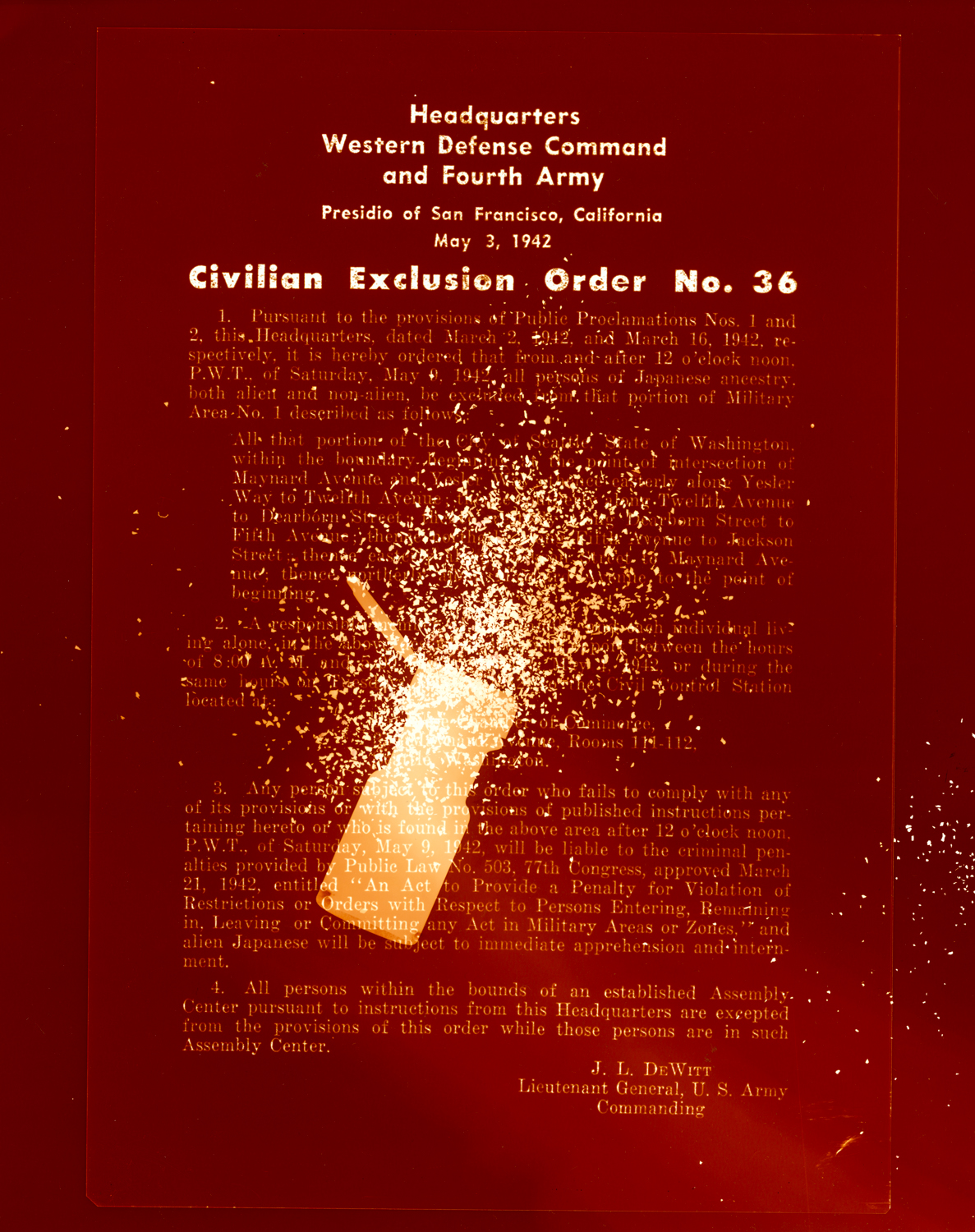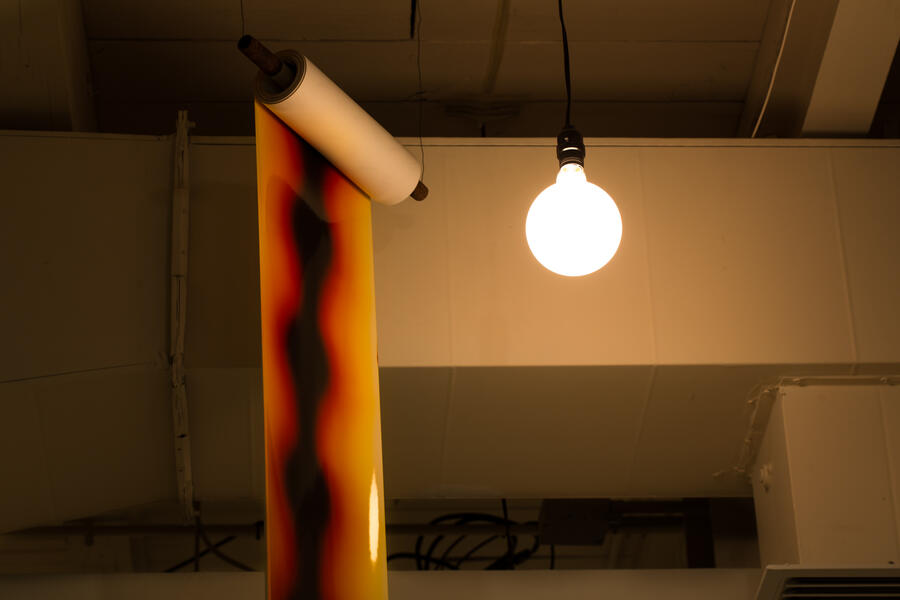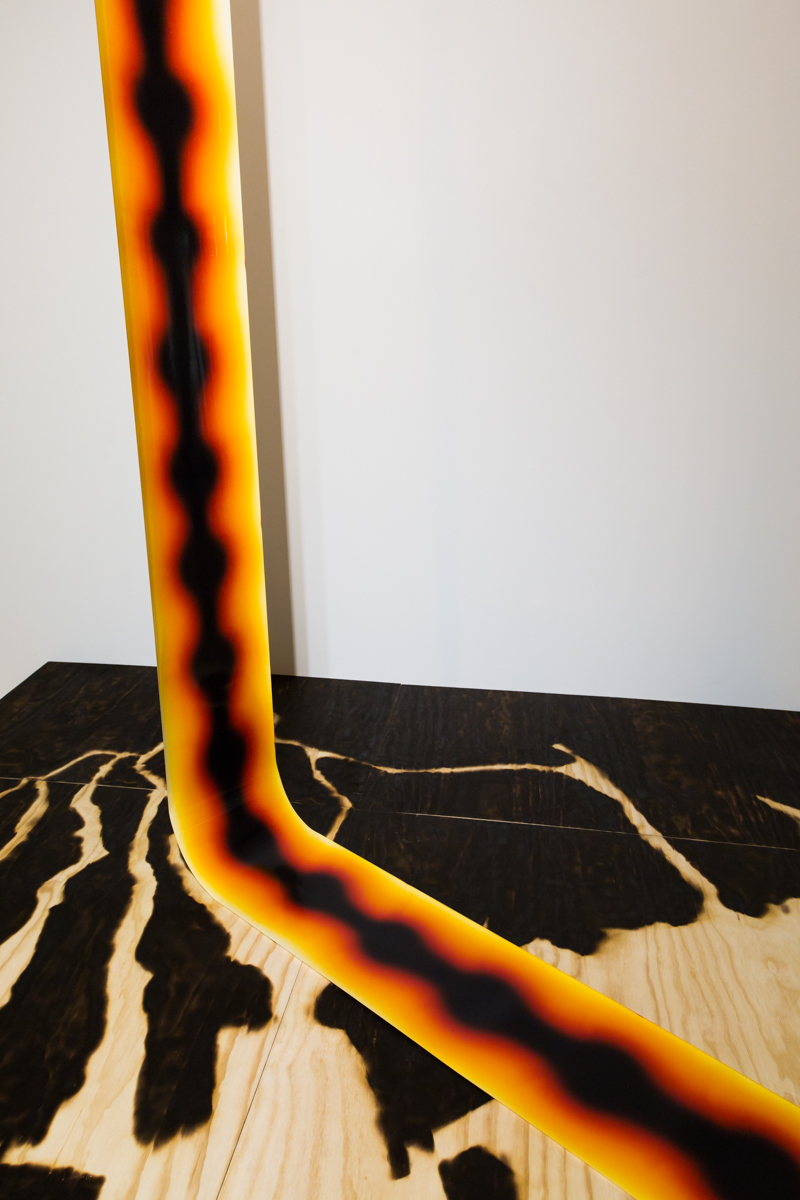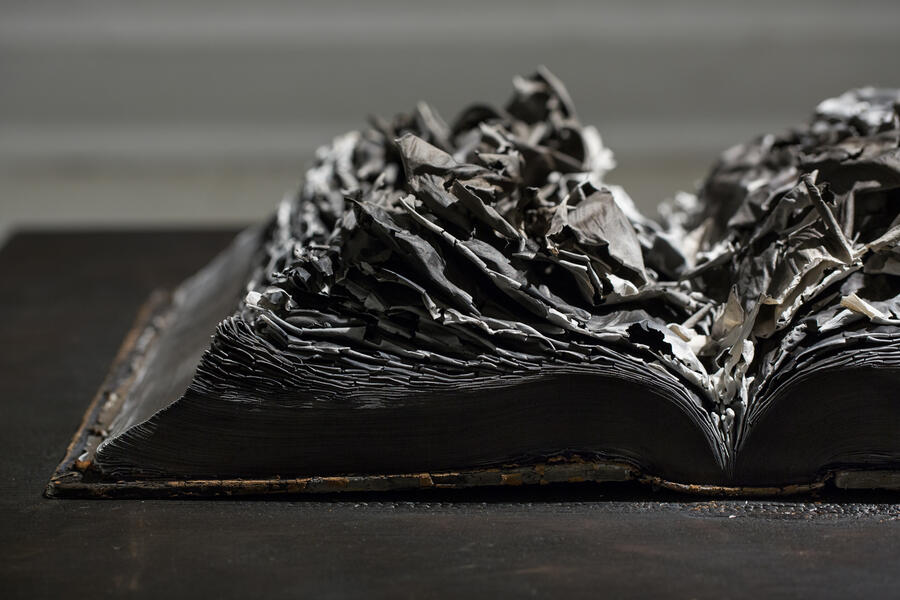About Kei
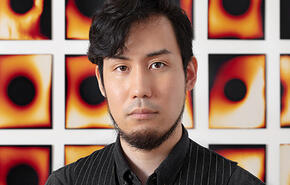
Kei Ito (b. 1991) is an interdisciplinary installation artist working primarily with photographic media and sculpture. Ito received his BFA from Rochester Institute of Technology followed by his MFA from Maryland Institute College of Art.
Ito’s photographs are fundamentally rooted in the trauma and legacy passed down from his late grandfather, a survivor of the atomic bombing of Hiroshima, and the loss of many other family members from the explosion and subsequent radiation poisoning… more
Only What We Can Carry
In the past, it may once have been a set of treasured letters brought to the camp during WWll. In these times, it could be a photo-filled cellphone or a laptop. But the suffocating decision of choosing between items of meaning and use to carry with you, or leave behind, must be the same. These objects, and these reaching gestures are all exposed with the poster, radiating through the C-prints like X-rays. They are juxtaposed in together as a warning, a warning that bridges the mistakes of the past with our time in the present.
-
 Only What We Can Carry: Stevenson University Gallery 2019Installation View at Stevenson University Gallery
Only What We Can Carry: Stevenson University Gallery 2019Installation View at Stevenson University Gallery -
 Civilian Exclusive Order No.11 : Paint knife and PalletOnly What We Can Carry is a series of 85 Contact C-Prints of Japanese Internment Camp (Executive Order 9066) posters exposed with various everyday objects. These everyday objects represent what I would bring with me if I had one day to gather my belongings. This poster became a symbol of bigotry and paranoia towards a specific group of people, and it echoes in these times where these same prejudices have reemerged for another group of people.
Civilian Exclusive Order No.11 : Paint knife and PalletOnly What We Can Carry is a series of 85 Contact C-Prints of Japanese Internment Camp (Executive Order 9066) posters exposed with various everyday objects. These everyday objects represent what I would bring with me if I had one day to gather my belongings. This poster became a symbol of bigotry and paranoia towards a specific group of people, and it echoes in these times where these same prejudices have reemerged for another group of people. -
 Civilian Exclusive Order No.25 : Smartphone
Civilian Exclusive Order No.25 : Smartphone -
 Civilian Exclusive Order No.36 : Spice
Civilian Exclusive Order No.36 : Spice -
 Civilian Exclusive Order No.22 : Small Frying Pan
Civilian Exclusive Order No.22 : Small Frying Pan -
 Civilian Exclusive Order No.94 : Headphone
Civilian Exclusive Order No.94 : Headphone -
 Civilian Exclusive Order No.108 : Familyphoto
Civilian Exclusive Order No.108 : Familyphoto -
 Civilian Exclusive Order No.42: Knife
Civilian Exclusive Order No.42: Knife -
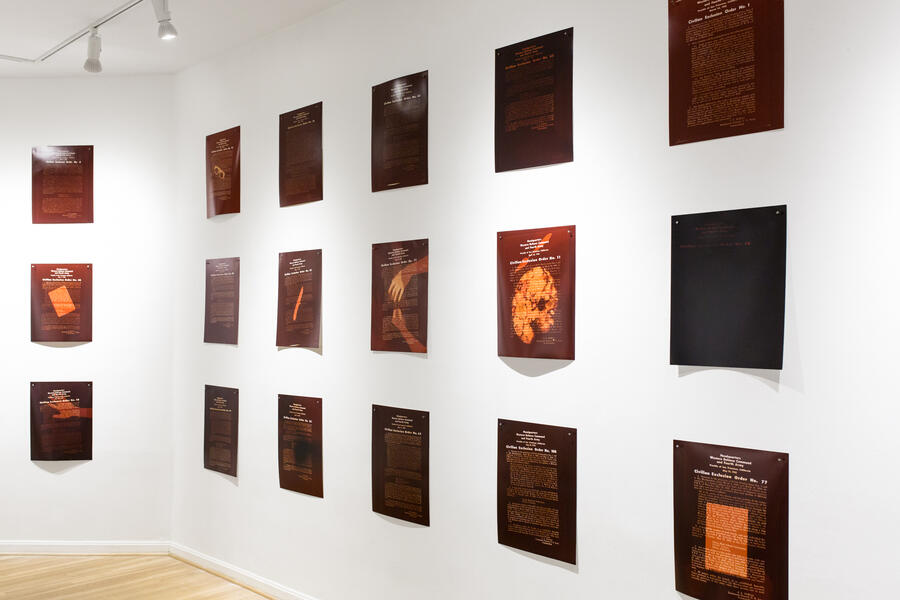 Only What We Can Carry: Hillyer Art Space/IA&A 2018Installation view at Hillyer Art Space/IA&A at Hillyer, Washington DC (2018)
Only What We Can Carry: Hillyer Art Space/IA&A 2018Installation view at Hillyer Art Space/IA&A at Hillyer, Washington DC (2018) -
 Only What We Can Carry: Hillyer Art Space/IA&A 2018Installation view at Hillyer Art Space/IA&A at Hillyer, Washington DC (2018)
Only What We Can Carry: Hillyer Art Space/IA&A 2018Installation view at Hillyer Art Space/IA&A at Hillyer, Washington DC (2018)
Infertile American Dream
The increase of nuclear armaments worldwide, and the ramping up of nuclear tensions between the US and North Korea harken back to the terror of my grandfather’s experience during the bombing of Hiroshima in 1945. By his account, it seemed as though the sky was lit by hundreds of suns. On that day, the very fabric of life that he knew, his friends, family, and even the landscapes of the city were completely annihilated. Any trace of home seemed to never have existed, as if his home was never even built.
As a 3rd generation A-bomb victim who is now a resident of America, I find the chaos in the current political establishment unbearable. Political divides have deepened, and nuclear war seems closer on the horizon than it has ever been in my lifetime. Blind fear directed towards to a group of people through prejudice and misunderstanding caused by media; the realization that the home, in both physical and spiritual sense, can be taken away as quickly as thirty minutes by a single bomb and the chain reaction that follows. After we reach the point of no return, the American Dream will be unsustainable--an empty and barren wasteland filled with nothing but ash left for future generations. Like the unassembled home in Infertile American Dream, our children will not be able to have a chance to conceive their ideal vision of hope for the future.
A Nation Follows Where It Leads was made in 2018 as a follow up to the project. A C-print photogram made with an American Flag on 06/14/2018 which is both US Flag Day and President Trump’s birthday.
Infertile American Dream
2016-2021
Chromogenic Print(C-print), Sunlight, Model of House, Wooden Frame
Triptych of 27”x38”
Exhibition History:
2017: School 33, MD
2018: 14x48 NYC Art Billboard Project, NY
2018: IA&A at Hillyer (Hillyer Art Space), DC
2019: Candela Gallery, VA
-
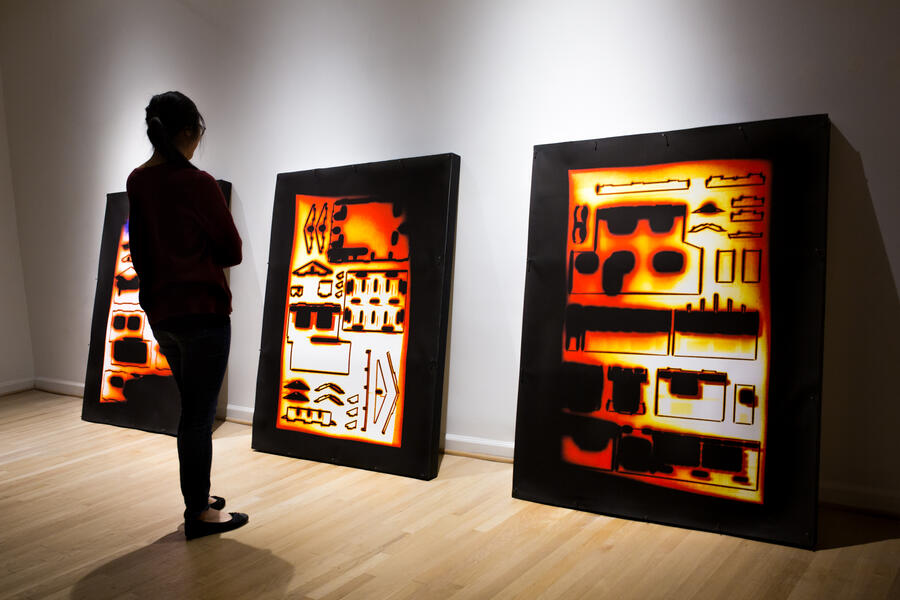 Infertile American Dream: IA&A at Hillyer 2018Installation view at IA&A at Hillyer, Washington, DC (2018)
Infertile American Dream: IA&A at Hillyer 2018Installation view at IA&A at Hillyer, Washington, DC (2018) -
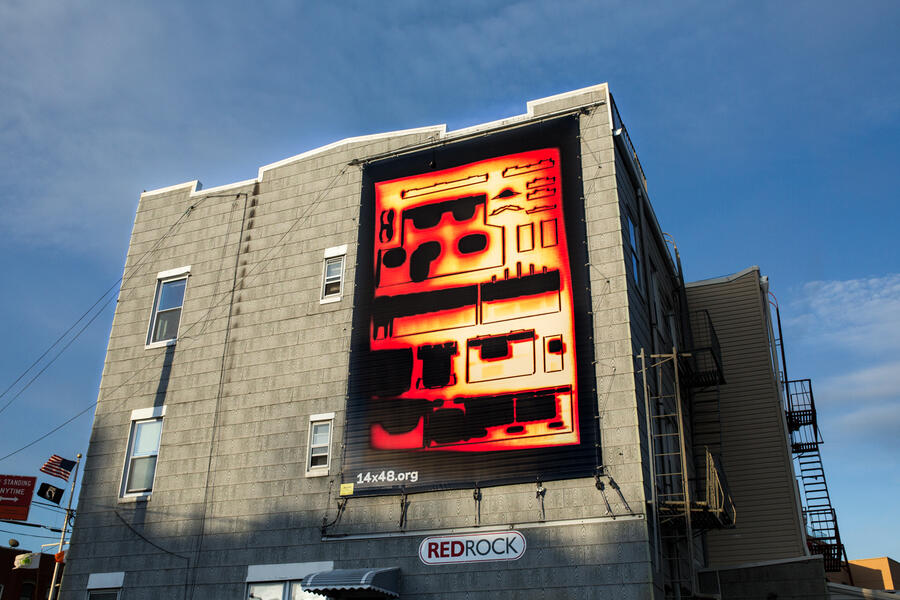 Infertile American Dream: Art BillboardArt Billboard sponsored by 14x48.org, Woodpoint Rd/Conselyea St in Brooklyn, NYC, near Graham Av L station.
Infertile American Dream: Art BillboardArt Billboard sponsored by 14x48.org, Woodpoint Rd/Conselyea St in Brooklyn, NYC, near Graham Av L station. -
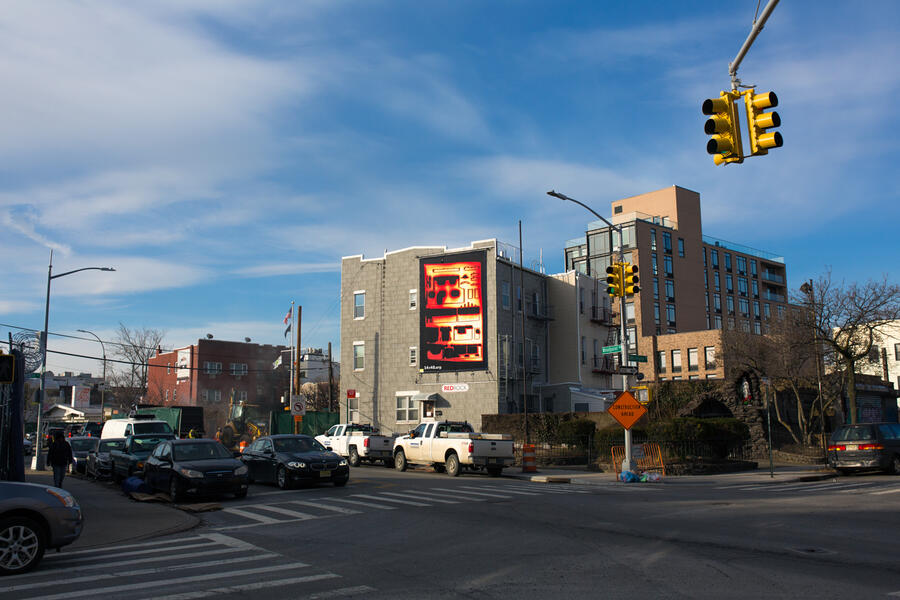 Infertile American Dream: Art BillboardArt Billboard sponsored by 14x48.org, Woodpoint Rd/Conselyea St in Brooklyn, NYC, near Graham Av L station.
Infertile American Dream: Art BillboardArt Billboard sponsored by 14x48.org, Woodpoint Rd/Conselyea St in Brooklyn, NYC, near Graham Av L station. -
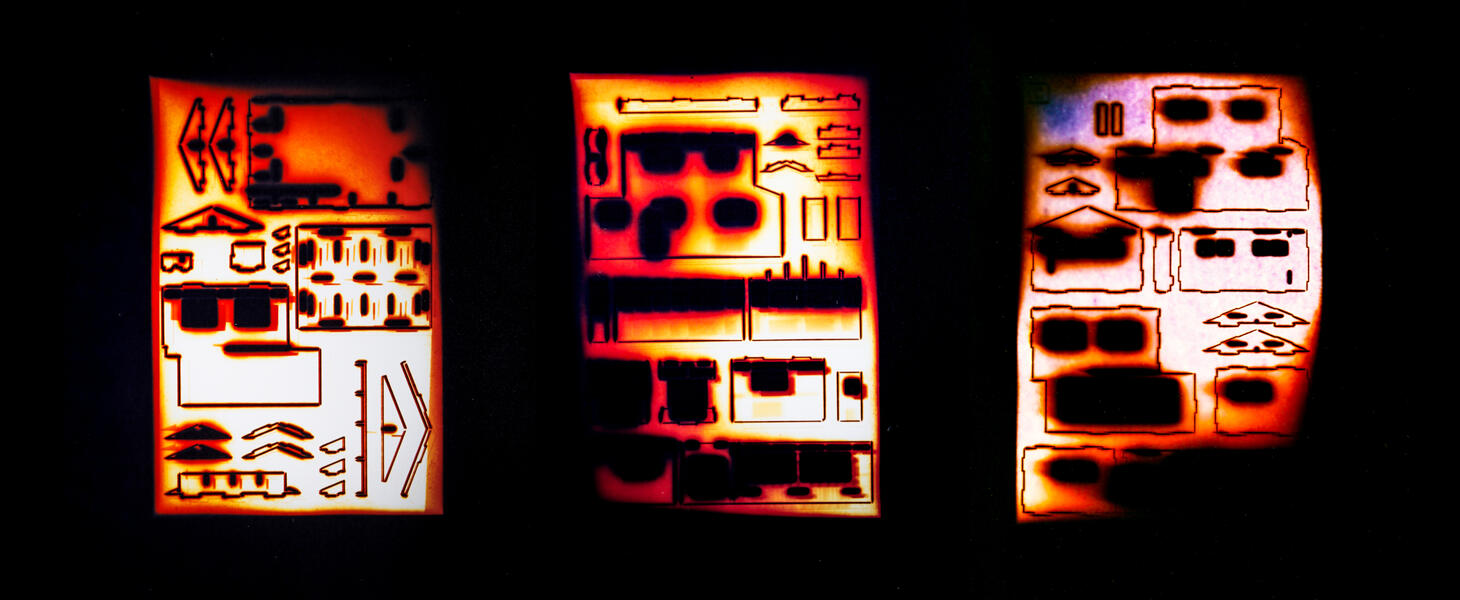 Infertile American Dream
Infertile American Dream -
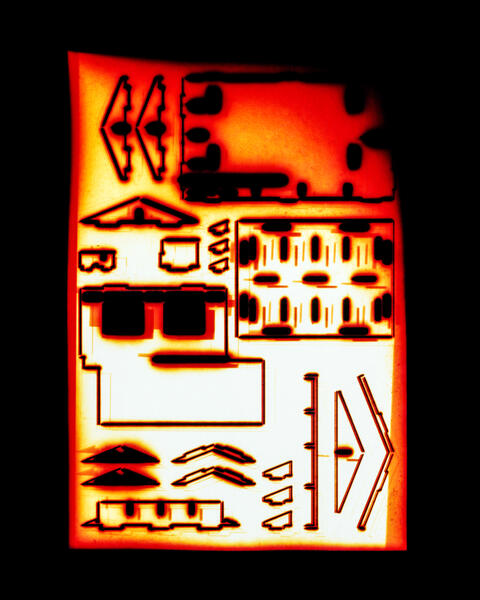 Infertile American Dream: Detail 1/3Infertile American Dream is a triptych of C-prints, which were created by exposing light-sensitive paper to sunlight on the day the 45th US president was elected.
Infertile American Dream: Detail 1/3Infertile American Dream is a triptych of C-prints, which were created by exposing light-sensitive paper to sunlight on the day the 45th US president was elected. -
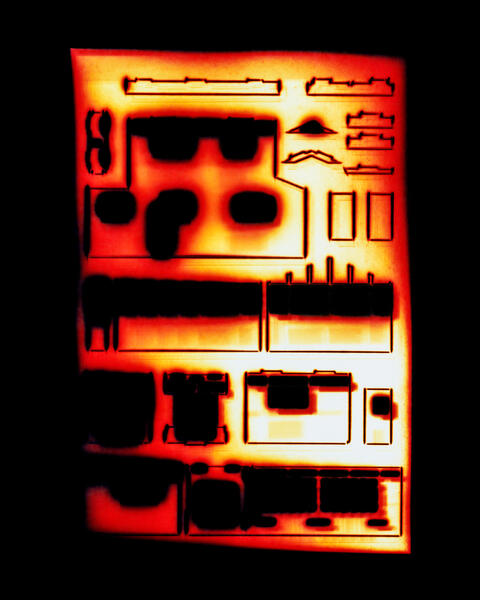 Infertile American Dream: Detail 2/3
Infertile American Dream: Detail 2/3 -
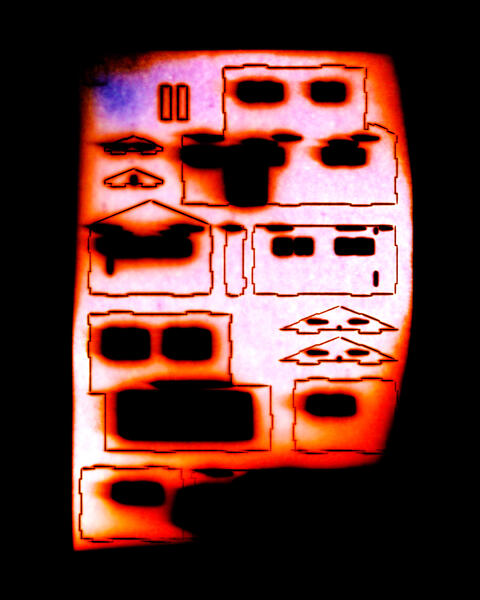 Infertile American Dream: Detail 3/3
Infertile American Dream: Detail 3/3 -
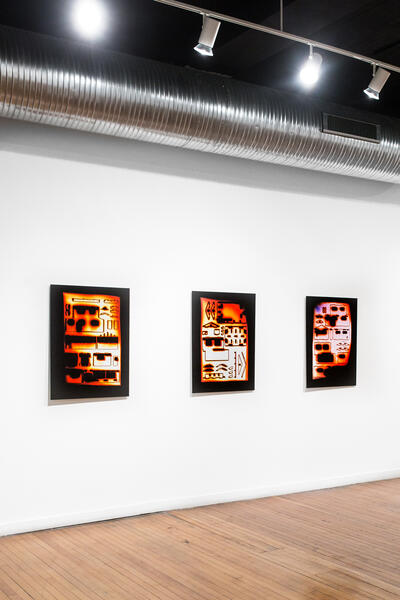 Infertile American Dream: School 33, 2017Installation view at School 33 Art Center, Baltimore, MD (2017)
Infertile American Dream: School 33, 2017Installation view at School 33 Art Center, Baltimore, MD (2017) -
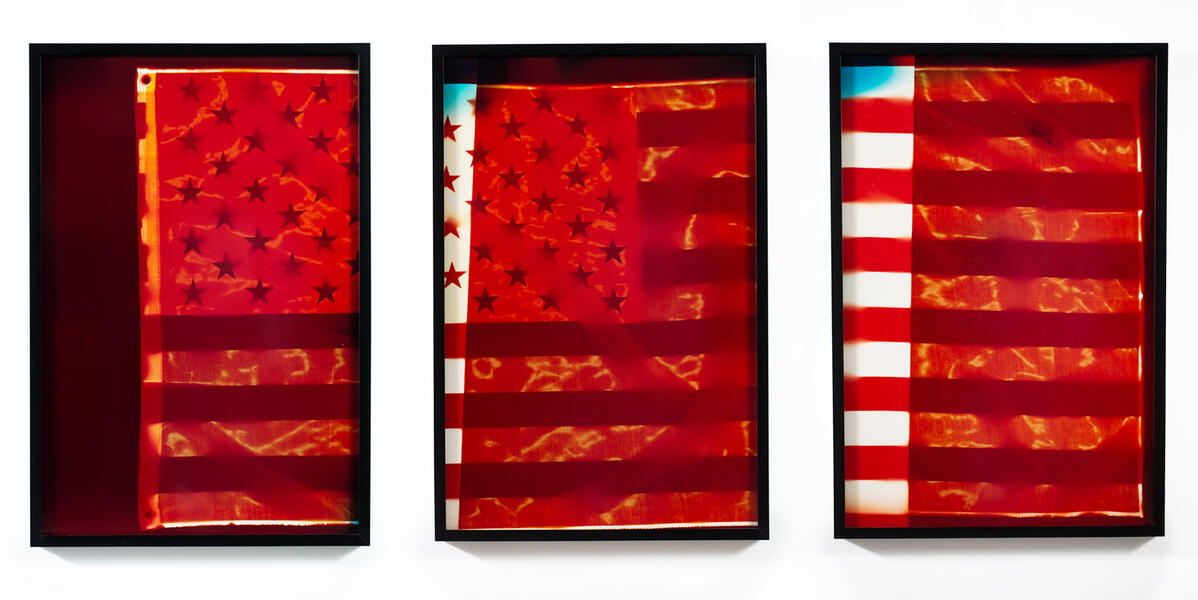 A Nation Follows Where It Leads: Candela Gallery 2019Installation view at Candela Gallery Richmond, VA (2019) A C-print photogram made with an American Flag on 06/14/2018 which is both US Flag Day and President Trump’s birthday.
A Nation Follows Where It Leads: Candela Gallery 2019Installation view at Candela Gallery Richmond, VA (2019) A C-print photogram made with an American Flag on 06/14/2018 which is both US Flag Day and President Trump’s birthday. -
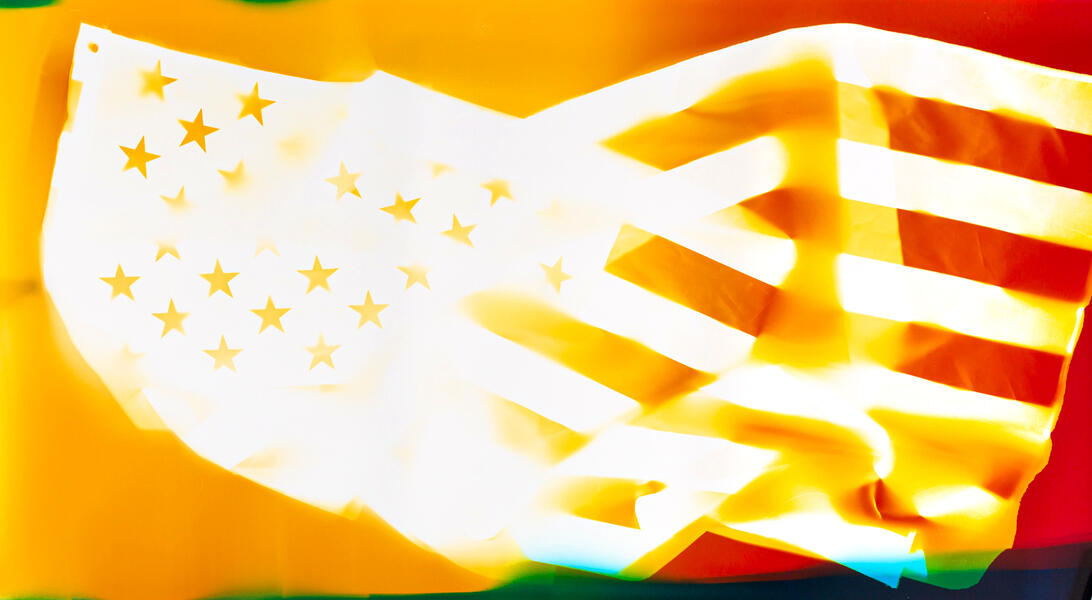 A Nation Follows Where It Leads 2A C-print photogram made with an American Flag on 06/14/2018 which is both US Flag Day and President Trump’s birthday.
A Nation Follows Where It Leads 2A C-print photogram made with an American Flag on 06/14/2018 which is both US Flag Day and President Trump’s birthday.
Sungazing
On August 6th 1945, at 8:15 AM, my grandfather witnessed a great tragedy that destroyed nearly everything in Hiroshima. He survived the bombing, yet he lost many of his family members from the explosion and radiation poisoning. As an activist and author, my grandfather fought against the use of nuclear weaponry throughout his life, until he too passed away from cancer when I was ten years old. I remember him saying that day in Hiroshima was like hundreds of suns lighting up the sky.
In order to express the connection between the sun and my family history, I have created 108 letter size prints and a 200 foot long scroll, made by exposing Type-C photographic paper to sunlight. The pattern on the prints/scroll corresponds to my breath. In a darkened room, I pulled the paper in front of a small aperture to expose it to the sun while inhaling, and paused when exhaling. I repeated this action until I breathed 108 times. 108 is a number with ritual significance in Japanese Buddhism; to mark the Japanese New Year, bells toll 108 times, ridding us of our evil passions and desires, and purifying our souls.
If the black parts of the print remind you of a shadow, it is the shadow of my breath, which is itself a registration of my life, a life I share with and owe to my grandfather. The mark of the atomic blast upon his life and upon his breath was passed on to me, and you can see it as the shadow of this print.
____
Sungazing Prints
2015, 2018
Unique c-print photograms (sunlight, artist's breath), Dibond mounted
Installation size: 108 x 106 in. (Print: 108 of 8 x 10 in.)
Sungazing Scroll
2015 - ongoing
Unique c-print photogram (sunlight, artist's breath)
12 in. x 150 ft. to 220 ft. depending on the edition
Exhibition History:
2024: The Georgia Museum of Art, GA
2020: apexart, NY
2019: Norton Museum of Art, FL
2019: SECCA (Southeastern Center for Contemporary Art), NC
2018: Antioch College, OH
2017: Museum of Contemporary Photography, IL
2016: Towson University, MD
2016: Manifest Gallery, OH
2015: California Institute of Integral Studies, CA
-
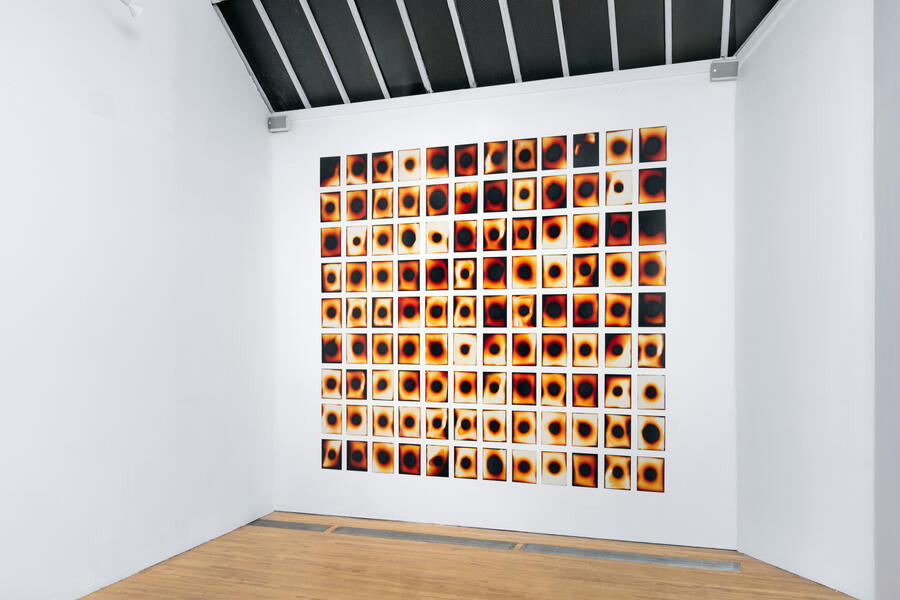 Sungazing Print: Apexart 2020Installation view at Apexart, NYC, NY, (2020)
Sungazing Print: Apexart 2020Installation view at Apexart, NYC, NY, (2020) -
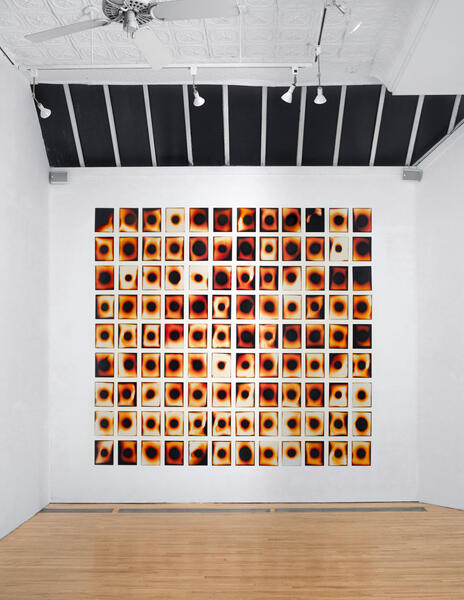 Sungazing Print: Apexart 2020
Sungazing Print: Apexart 2020Installation view at Apexart, NYC, NY, (2020)
-
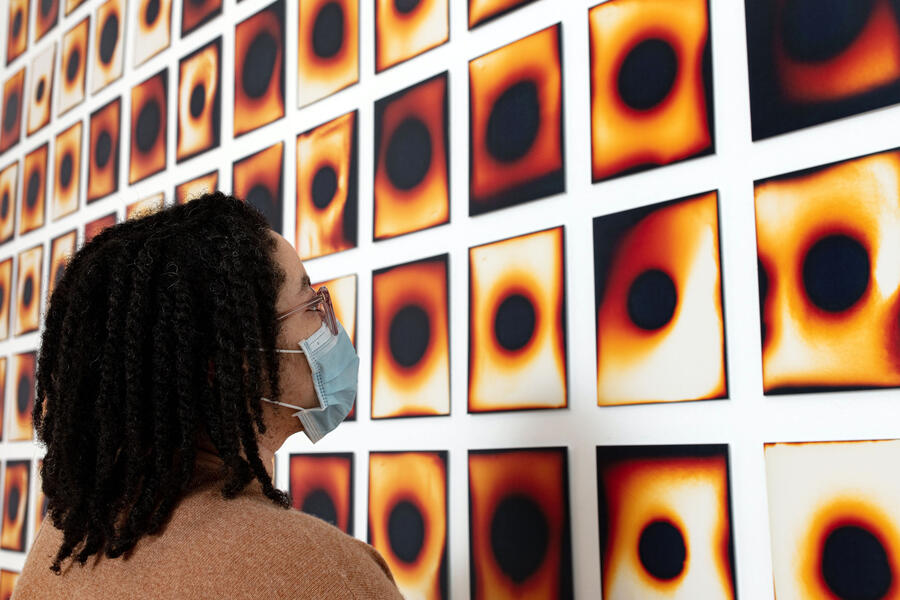 Sungazing Print: Apexart 2020Installation view at Apexart, NYC, NY, (2020)
Sungazing Print: Apexart 2020Installation view at Apexart, NYC, NY, (2020) -
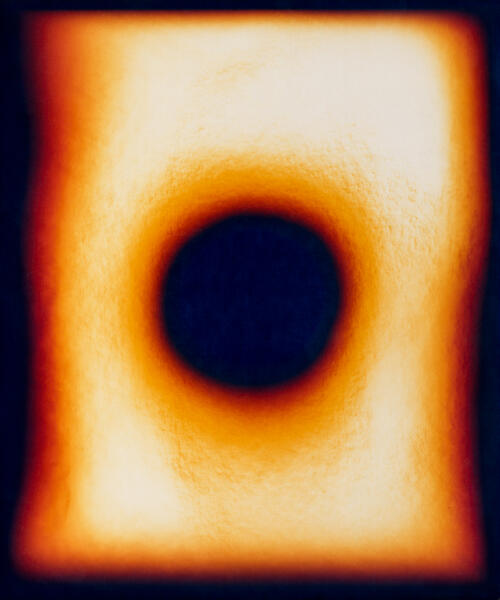 Sungazing 1/108
Sungazing 1/108 -
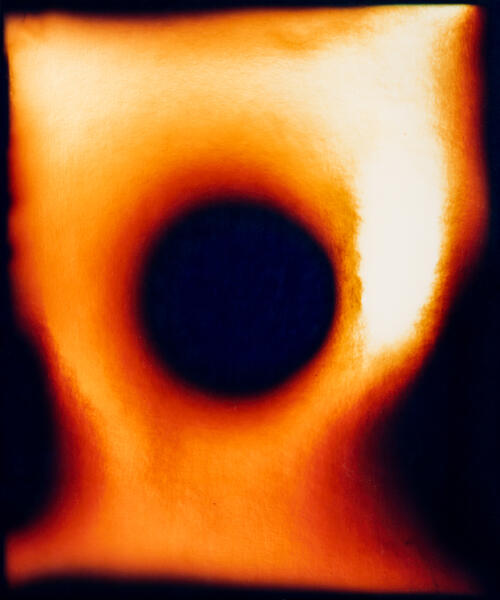 Sungazing 24/108
Sungazing 24/108 -
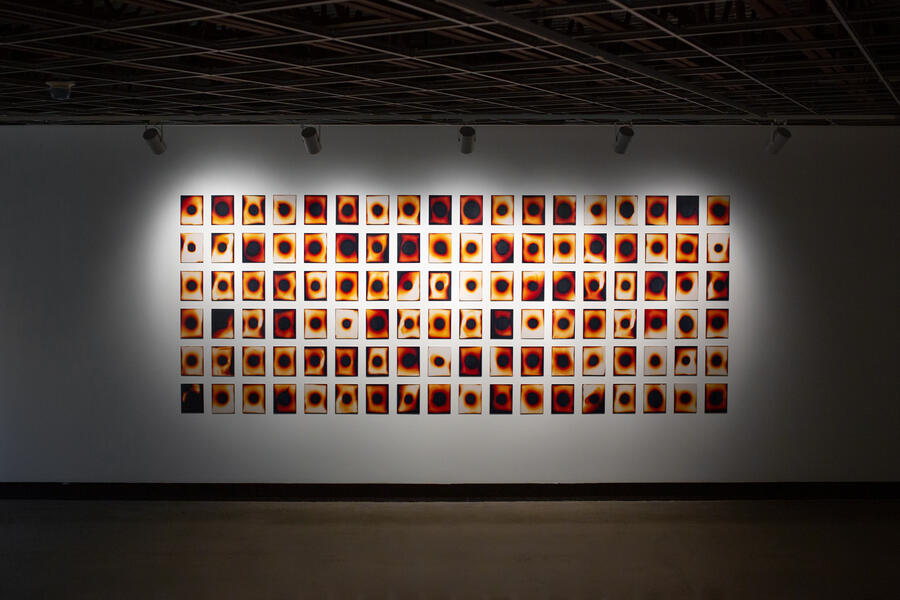 Sungazing Print: SECCA 2019Installation View at Southeastern Center for Contemporary Art(SECCA), NC (2019)
Sungazing Print: SECCA 2019Installation View at Southeastern Center for Contemporary Art(SECCA), NC (2019) -
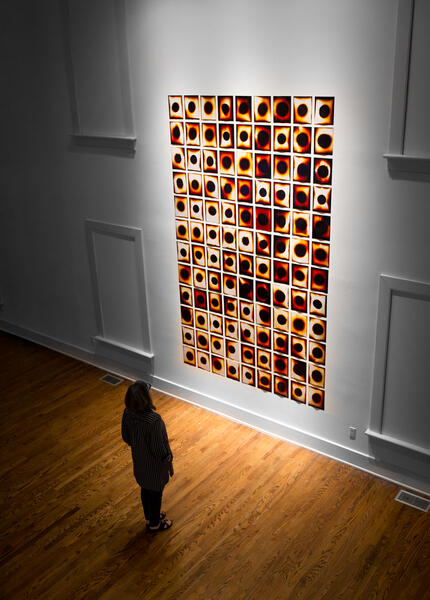 Sungazing Print: Herndon Gallery/ Antioch College 2018Installation view at Herndon Gallery/ Antioch College, Part of the FotoFocus Biennial, OH (2018)
Sungazing Print: Herndon Gallery/ Antioch College 2018Installation view at Herndon Gallery/ Antioch College, Part of the FotoFocus Biennial, OH (2018) -
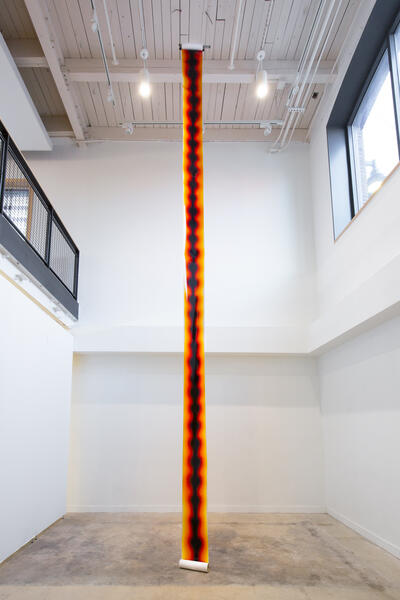 Sungazing Scroll: MICA 2017Installation view at MICA, MD (2017)
Sungazing Scroll: MICA 2017Installation view at MICA, MD (2017) -
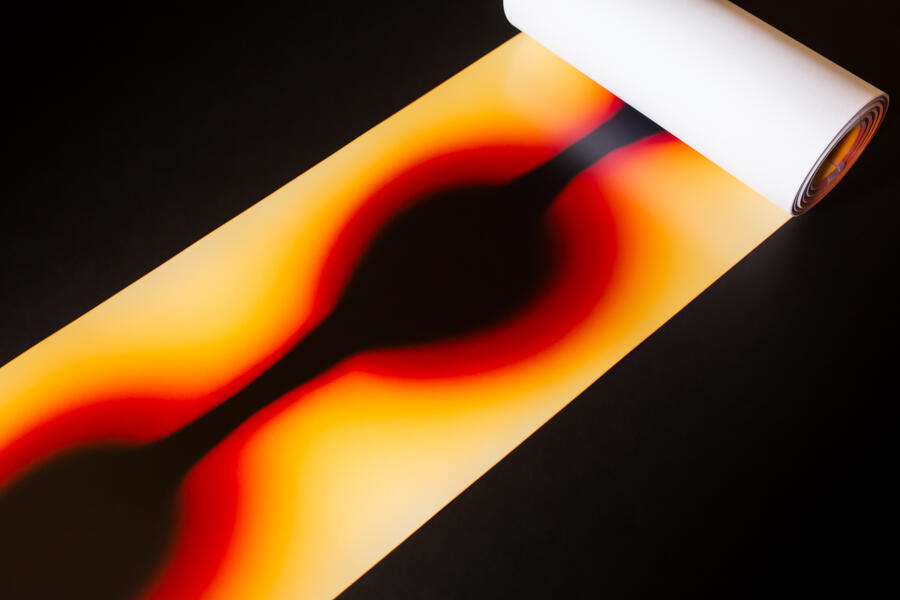 Sungazing Scroll: Norton Museum of Art 2019Installation view at the Norton Museum of Art, West Palm Beach, FL (2019)
Sungazing Scroll: Norton Museum of Art 2019Installation view at the Norton Museum of Art, West Palm Beach, FL (2019) -
 Sungazing Scroll (Section)A scanned section of Sungazing Scroll 2017
Sungazing Scroll (Section)A scanned section of Sungazing Scroll 2017
It Made Angels Out of Everybody
Media: Chromogenic Color Print.
“Today, Some people think that the light of the atom bomb will change the concept of painting once and for all. The eyes that actually saw the light melted out of sheer ecstasy, For one instant, everybody was the same color. It made angels out of everybody.” -Willem de Kooning
In the high summer of 1945, a specially modified B-29 called Enola Gay dropped an atomic bomb named Little Boy onto the city of Hiroshima. My grandfather, only a fifteen-year-old boy at the time, was exposed to and witnessed the light that took away his family. Many years later, it took his life in the form of cancer.
These prints were made by exposing a Type-C photographic paper to sunlight. The inverted image of an airplane was formed with the shadow of a toy model of the Enola Gay onto the light sensitive paper. The airplane delivered the purest light which vaporized entire bodies of innocents, leaving only their shadows.
The light cast by the innocent Little Boy on that fatal day created the darkest shadow known in history. The shadow grows and spreads as time continues, which allows little boys in their castles to obtain mountains of toys filled with atomic light.
Should the future bear witness to this light, there will be none left to be called angels.
Ash Lexicon-Silverplate
The burnt Japanese dictionary stuffed in the canisters is the one that identical to the dictionary once owned by my grandfather. Upon returning his home, my grandfather found his cherished Japanese dictionary incinerated, and saw that the ink had turned white on the blackened pages, as if it were rendered into a photographic negative.
At the same time that the radiation from the atomic bomb was inscribing itself into my grandfather’s genes, the flames from the bomb burned everything in Hiroshima, including the Japanese dictionaries my grandfather greatly cared for. This archive of history and culture became ash, thereby recording the destructive force of this new human technology.
The accompanied audio made by Andrew Keiper is a soundscape inspired by the specially modified B-29 Superfortress heavy bombers used in the atomic attacks on Hiroshima and Nagasaki. Dubbed Silverplate Series, these planes not only carried and dropped the bombs, but performed other aspects of the missions, including scouting and observation.
Ash Lexicon-Silverplate
2016
Burnt Japanese Dictionary, 108 film canisters, burnt 2x4 stud, audio
Various
Exhibition History:
2016: Maryland Art Place, MD
2018: Antioch College, OH
2019: SECCA (Southeastern Center for Contemporary Art), NC
-
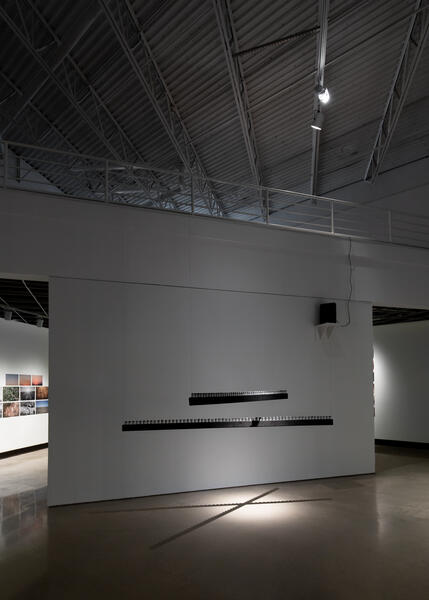 Ash Lexicon-Silverplate: SECCA 2019Installation view at Southeastern Center for Contemporary Art (SECCA) Winston-Salem, NC, (2019)
Ash Lexicon-Silverplate: SECCA 2019Installation view at Southeastern Center for Contemporary Art (SECCA) Winston-Salem, NC, (2019) -
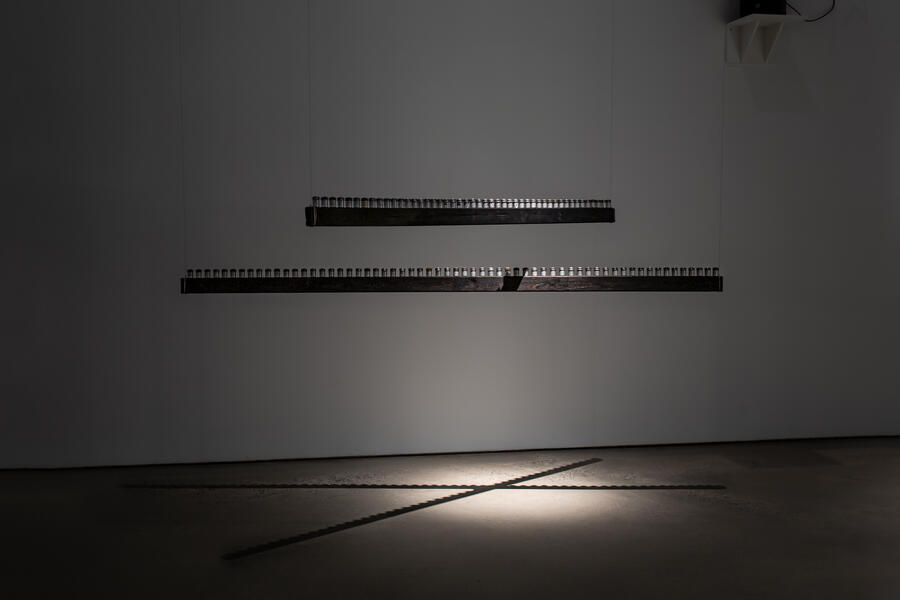 Ash Lexicon-Silverplate: SECCA 2019Installation view at Southeastern Center for Contemporary Art (SECCA) Winston-Salem, NC, (2019)
Ash Lexicon-Silverplate: SECCA 2019Installation view at Southeastern Center for Contemporary Art (SECCA) Winston-Salem, NC, (2019) -
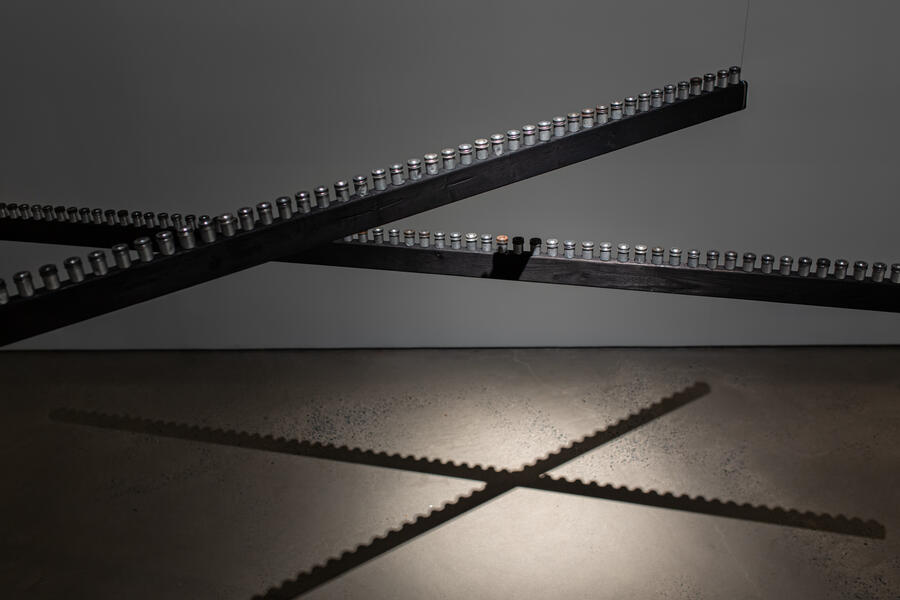 Ash Lexicon-Silverplate: SECCA 2019Installation view at Southeastern Center for Contemporary Art (SECCA) Winston-Salem, NC, (2019)
Ash Lexicon-Silverplate: SECCA 2019Installation view at Southeastern Center for Contemporary Art (SECCA) Winston-Salem, NC, (2019) -
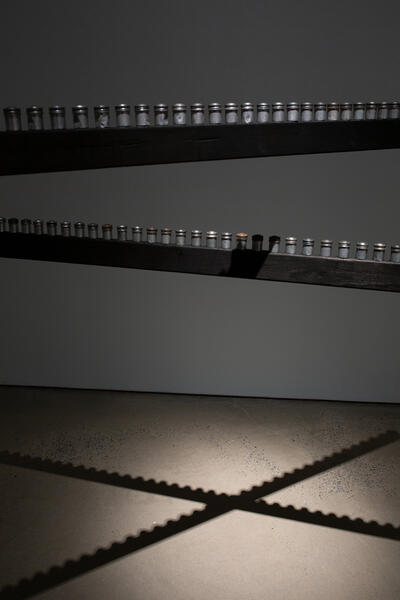 Ash Lexicon-Silverplate: SECCA 2019Installation view at Southeastern Center for Contemporary Art (SECCA) Winston-Salem, NC, (2019)
Ash Lexicon-Silverplate: SECCA 2019Installation view at Southeastern Center for Contemporary Art (SECCA) Winston-Salem, NC, (2019) -
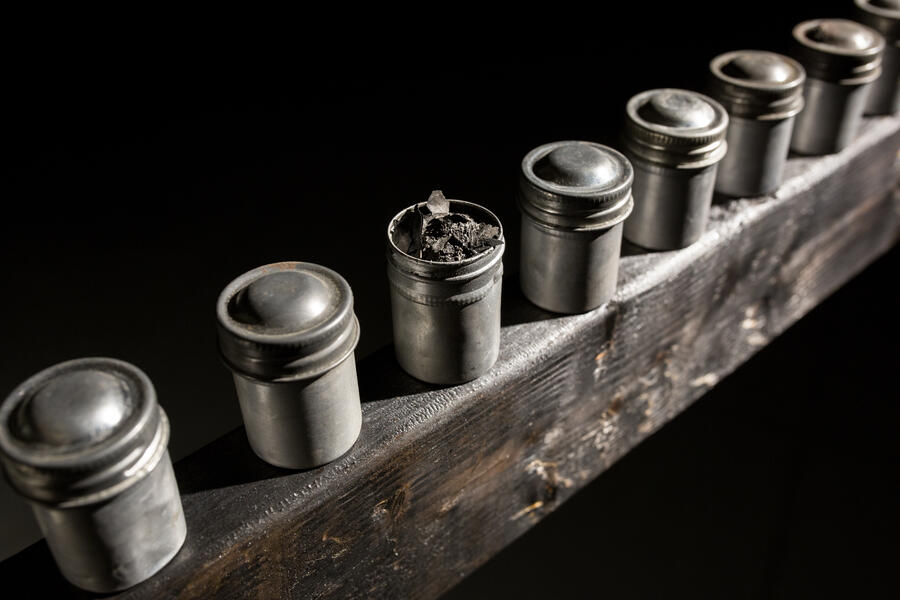 Ash Lexicon-Silverplate: SECCA 2019Installation view at Southeastern Center for Contemporary Art (SECCA) Winston-Salem, NC, (2019)
Ash Lexicon-Silverplate: SECCA 2019Installation view at Southeastern Center for Contemporary Art (SECCA) Winston-Salem, NC, (2019) -
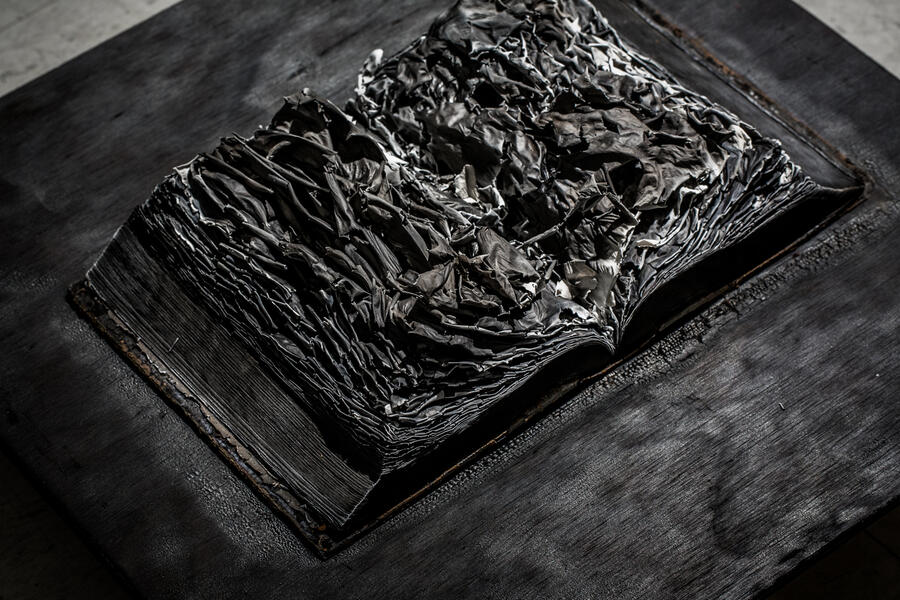 Ash Lexicon-Silverplate: Burnt Japanese dictionaryDocumentation of the burnt Japanese Dictionary before it was stuffed in the film canisters.
Ash Lexicon-Silverplate: Burnt Japanese dictionaryDocumentation of the burnt Japanese Dictionary before it was stuffed in the film canisters. -
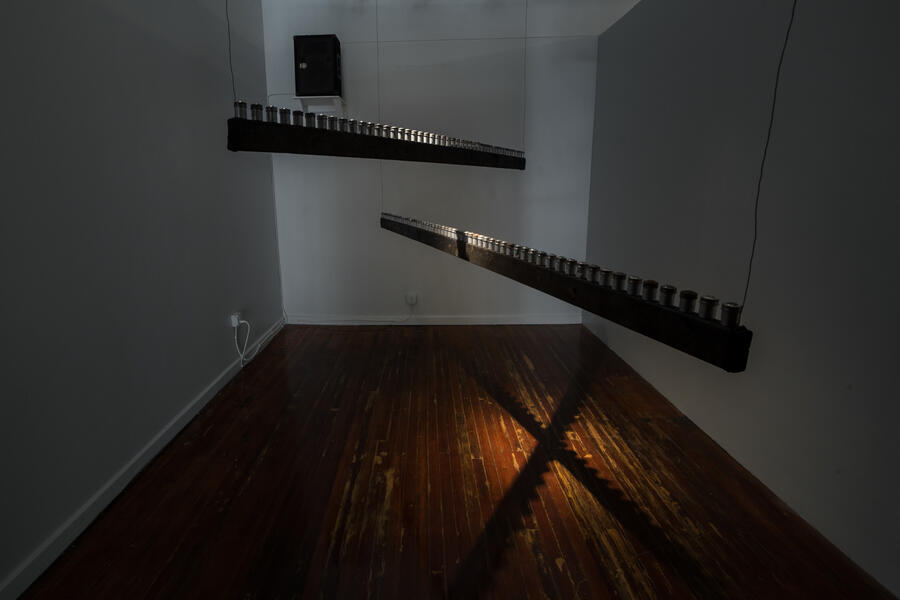 Ash Lexicon-Silverplate: Maryland Art Place 2016Installation view at Maryland Art Place, Baltimore, MD (2016)
Ash Lexicon-Silverplate: Maryland Art Place 2016Installation view at Maryland Art Place, Baltimore, MD (2016) -
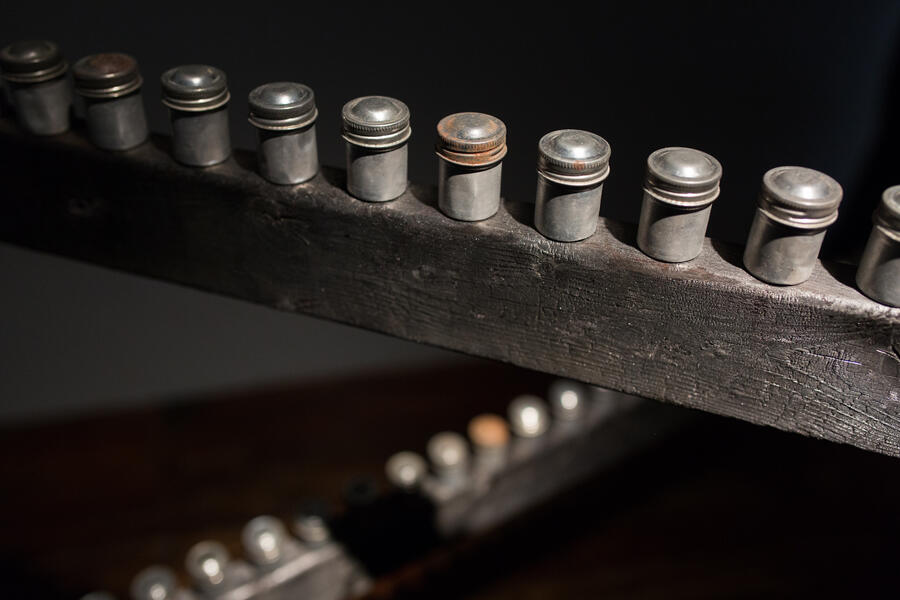 Ash Lexicon-Silverplate: Maryland Art Place 2016
Ash Lexicon-Silverplate: Maryland Art Place 2016 -
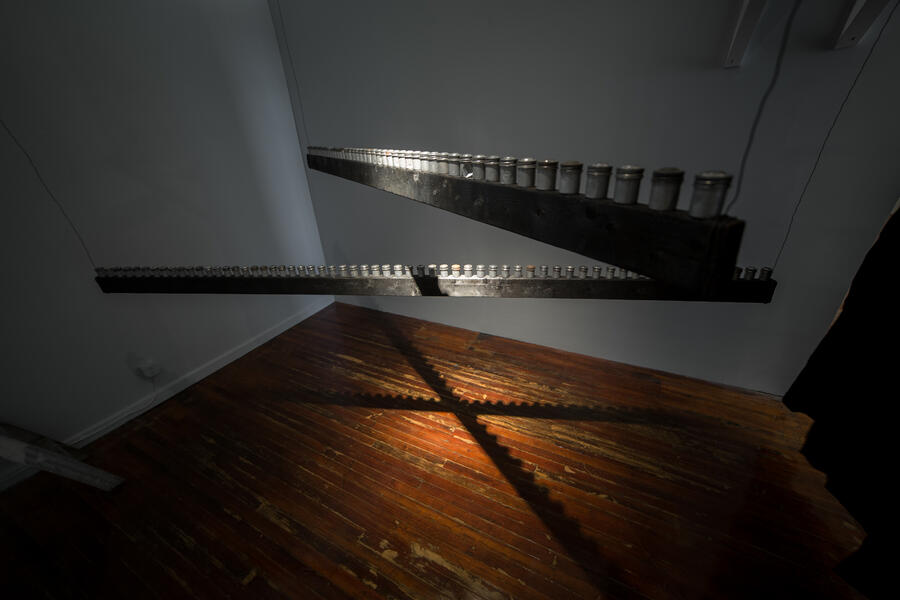 Ash Lexicon-Silverplate: Maryland Art Place 2016
Ash Lexicon-Silverplate: Maryland Art Place 2016 -
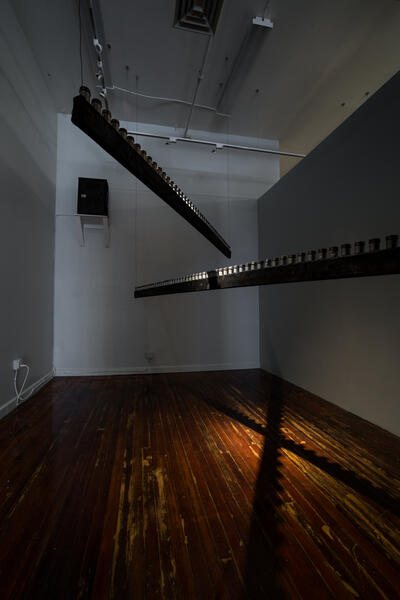 Ash Lexicon-Silverplate: Maryland Art Place 2016
Ash Lexicon-Silverplate: Maryland Art Place 2016
Hiroshima Keeps Telling
The audio was overlay with my breathing, which corresponds to the blinking lightbulb that hangs in front of the scroll. The scroll ascends vertically at where the A-bomb was exploded on the topological map of Hiroshima which is blowtorched on a wooden platform.
Hiroshima 08/06/2015 8:15am
The burnt Japanese dictionary shown in the view is the one that identical to the dictionary once owned by my grandfather. He once told through his book, upon returning to his home after the bombing, he found his cherished Japanese dictionary incinerated, and saw that the ink had turned white on the blackened pages, as if it were rendered into a photographic negative.
At the same time that the radiation from the atomic bomb was inscribing itself into my grandfather’s genes, the flame from the bomb burnt everything in Hiroshima, including the Japanese dictionaries my grandfather cherished. This archive of history and culture became ash, thereby recording the destructive force of this new human technology. One of my grandfather’s friends told me once “there is no word that can describe what we witnessed that day”.
Shadow Optic
Thirst
Collaboration with Alexa Rinn (PhD Peabody Institute of Music) Thirst is based on the story my grandfather once told me. If the death was the first thing the A-bomb gave to the people in Hiroshima, burnt flesh and unbearable thirst was the next. Many survivors jumped into a river to ease their deadly thirst. However, many of their throats were so burnt that they drown due to being unable to swallow the water. By the next morning, the river was filled with bodies staring at the sky and the sun.
Performed at the Walters Art Museum.
-
 Video stillsVideo stills
Video stillsVideo stills -
ThirstDuration: 7 minutes 18 seconds
-
 Thirst: Performance view at Walter Art Museum 2016Location: Walter Art Museum. Music performed to the video by Julia Kim (Violinist) and Catarina Ferreira (Cellist).
Thirst: Performance view at Walter Art Museum 2016Location: Walter Art Museum. Music performed to the video by Julia Kim (Violinist) and Catarina Ferreira (Cellist). -
 Thirst: Performance view at Walter Art Museum 2016
Thirst: Performance view at Walter Art Museum 2016 -
 Thirst: Performance view at Walter Art Museum 2016
Thirst: Performance view at Walter Art Museum 2016 -
 Thirst: Performance view at Walter Art Museum 2016
Thirst: Performance view at Walter Art Museum 2016



